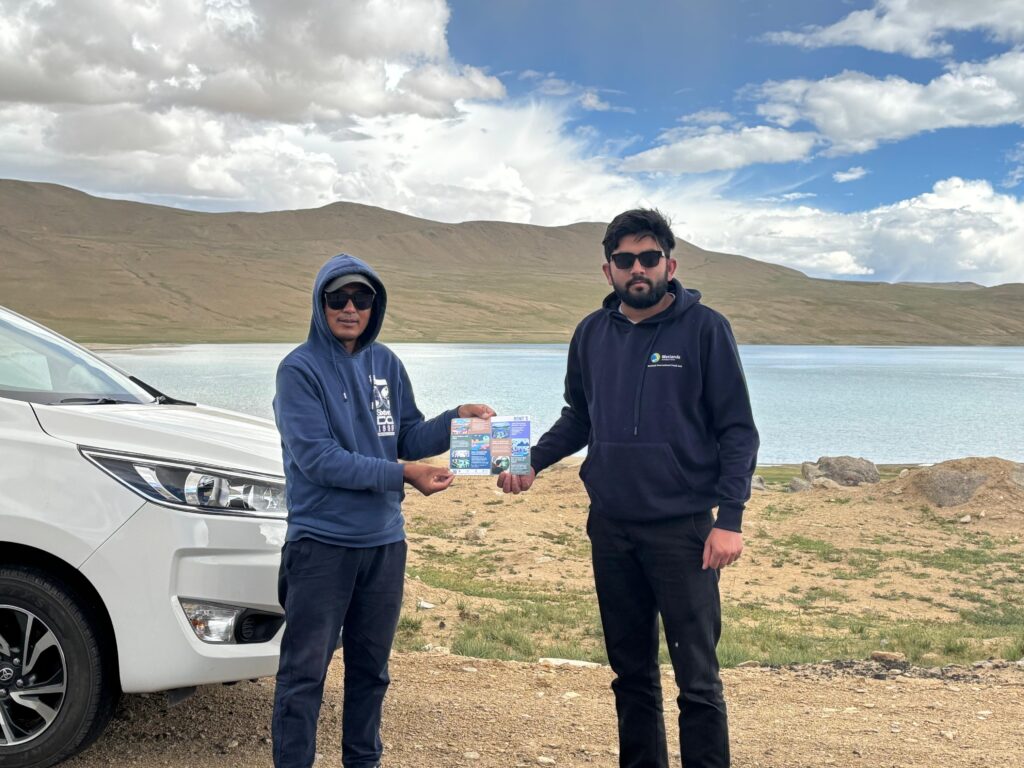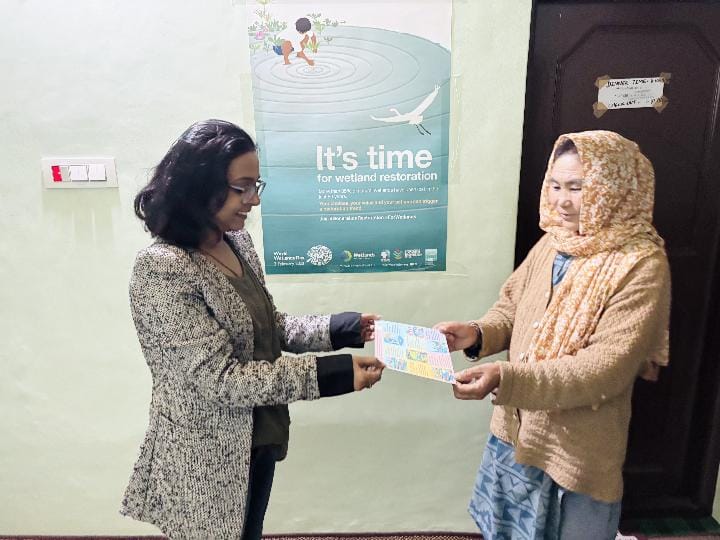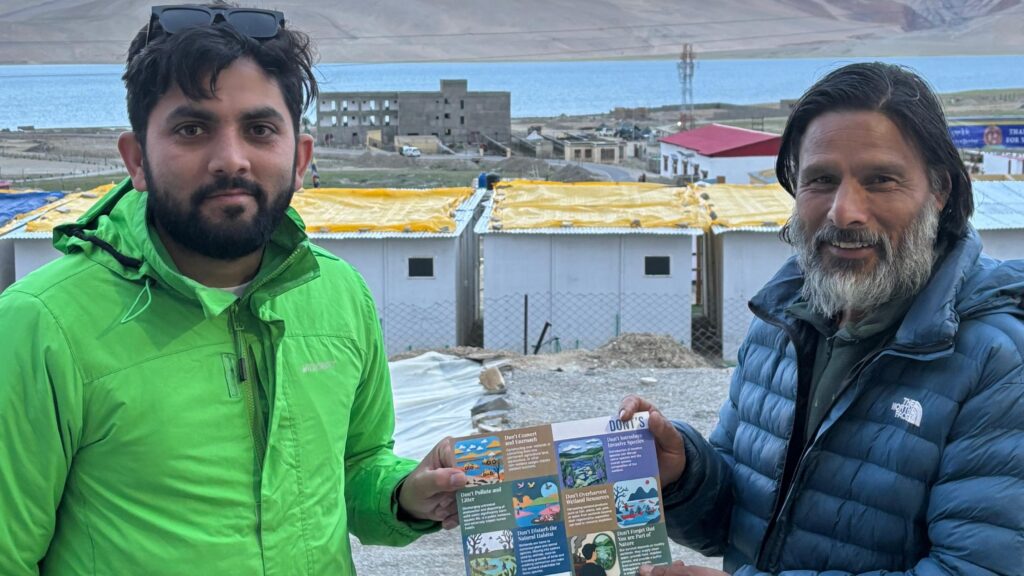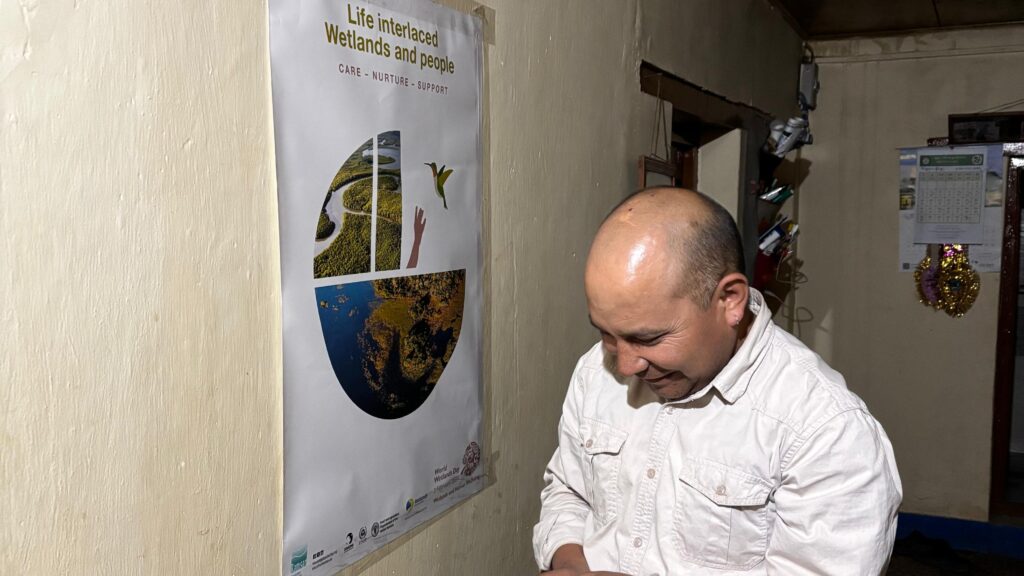
Sensitization drive in Hanle, Tso Moriri, and Debring to conserve Ladakh’s high-altitude wetlands
-
Capacity development
-
Community resilience
High up in the trans-Himalayan region, Ladakh is home to some of the world’s most stunning high-altitude wetlands. From the turquoise expanse of Tso Moriri to the bird-rich wetlands of Hanle, these fragile ecosystems support an incredible diversity of life. They are breeding grounds for rare species like the black-necked crane and a lifeline for nomadic herders and local communities. Their unparalleled beauty also draws thousands of tourists every year, making wetlands central not just to Ladakh’s ecology but also to its cultural identity and sustainable tourism economy. Yet, the rapid increase in tourism and related activities poses increasing pressure on these fragile ecosystems.
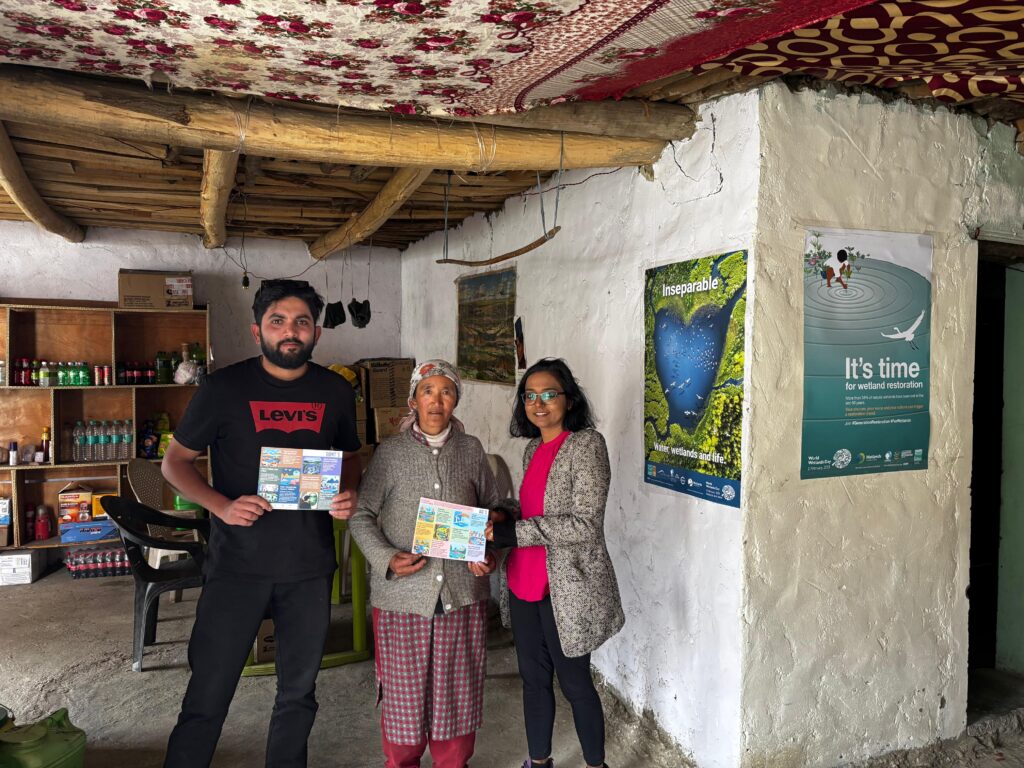
Several homestay owners from Hanle, Tso Moriri, and Debring recalled how, not long ago, the wetlands around their villages remained pristine, with clear waters, undisturbed pastures, and abundant birdlife. They observed, however, that the rapid rise in tourism has brought visible changes—growing waste, disturbance to wildlife, and pressure on scarce water resources. While acknowledging the importance of tourism for local livelihoods, they expressed concern that irresponsible practices, such as littering, off-road driving, and overuse of plastic, are gradually eroding the very beauty that draws visitors to Ladakh. Emphasising the need for collective responsibility, Wetlands International South Asia, with local homestay owners, urged both residents and tourists to embrace more sustainable habits so that the wetlands continue to thrive for future generations. The sensitisation activities included interactive sessions on sustainable tourism, waste management, and cultural sensitivity. Ms. Suchita Awasthi and Mr. Arif Ahmed from WISA highlighted how unregulated tourism pressures, ranging from plastic pollution to overuse of scarce water resources, pose challenges to Ladakh’s unique high-altitude ecosystems.
The sensitization drive encouraged homestay owners to adopt sustainable practices such as minimising single-use plastics, avoiding off-road driving in sensitive habitats, and guiding visitors responsibly. It also reminded tourists of their role as conscious travellers, respecting local customs, reducing waste, and supporting community-based initiatives while travelling to these locations.
Awareness campaign to promote wetlands conservation in Ladakh
A slideshow with 5 images
The slider is set to loop infinitely.
During the sensitization drive, pamphlets on dos and don’ts and other outreach materials were distributed among homestay owners, restaurant operators, taxi drivers, and tourists. Notably, the initiative also witnessed active community participation, as residents and business owners voluntarily pasted awareness posters on walls in open spaces. These posters serve as a visible reminder to tourists and visitors about the need to conserve Ladakh’s fragile wetland ecosystems.
As part of Phase II, Wetlands International South Asia will expand sensitisation efforts to more wetlands across the Leh landscape, accompanied by extensive field surveys to strengthen knowledge on wetland use, pressures, and community dependencies. This phase will further integrate conservation awareness with on-ground data collection, ensuring that both local communities and tourists contribute to the sustainable management of Ladakh’s wetlands.

